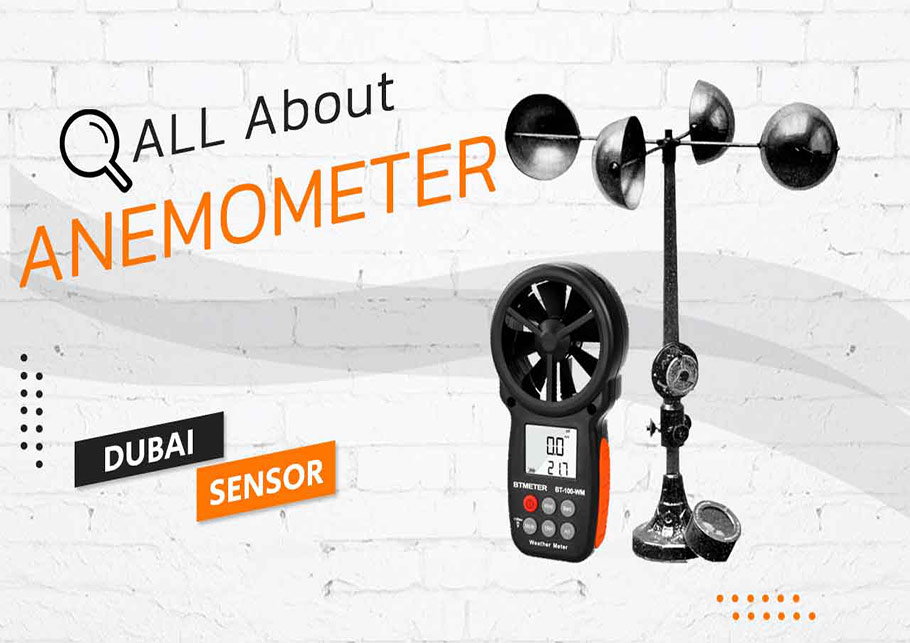Selecting the Right Anemometer: A Comprehensive Purchasing Overview
Wiki Article
All You Need to Find Out About Anemometers: How They Function, Why They Issue, and Where to Use Them
Anemometers, though commonly ignored in the world of scientific instruments, play a critical role in different areas, using useful understandings into wind rate and air movement patterns. As we dig into the complexities of anemometer innovation, we will certainly uncover the inner operations of these gadgets, their importance, and the key factors to consider when choosing the ideal anemometer for details applications.
Anemometer Essentials
A necessary tool utilized to gauge wind speed and instructions, the anemometer plays a vital role in meteorology and different markets. An anemometer normally consists of three or 4 cups that revolve in the wind, a vane that aims into the wind, and sensors to track the turnings or movements. By determining the rotations or movements over a particular period, the anemometer can identify wind rate. The vane aids figure out wind direction by aiming right into the wind, offering useful data for weather forecasting, aeronautics, maritime operations, ecological tracking, and wind power applications.
There are numerous kinds of anemometers available, including mug anemometers, vane anemometers, hot-wire anemometers, and sonic anemometers, each with its one-of-a-kind features and applications. Cup anemometers are frequently made use of for basic wind speed measurements, while vane anemometers are liked for directional dimensions.
Concepts of Anemometer Procedure
Building on the foundational understanding of anemometer basics, the principles of anemometer procedure elucidate the mechanics behind wind speed and direction measurements. Anemometers operate the concept of air flow influencing a sensing unit, causing it to rotate. Cup anemometers, for instance, have 3 or even more mugs that record the wind, causing them to rotate quicker as the wind speed boosts. The turning rate is after that exchanged a wind speed measurement. Vane anemometers, on the other hand, utilize a tail or a probe that straightens itself with the wind direction, giving a dimension of wind direction based on the positioning of the sensor. Hot-wire anemometers rely upon a heated cable that cools down as wind overlooks it, with the price of cooling figuring out the wind speed. Ultrasonic anemometers step wind speed and instructions by examining the moment it takes for ultrasonic signals to take a trip between transducers. Understanding these view it principles is vital for trusted and accurate wind measurements in numerous applications.Importance of Anemometers
Anemometers play a vital function in determining wind rate and direction, offering crucial information for climate projecting, climate researches, ecological monitoring, and aeronautics operations. Meteorologists rely on anemometers to collect precise wind information, helping them recognize weather condition patterns, predict tornados, and problem timely warnings to the public. Wind ranch operators use anemometers to assess wind problems and make the most of electrical power production from wind generators.Applications Throughout Various Industries
Applications of anemometers span throughout diverse markets, showcasing their versatility and energy beyond weather forecasting. In the renewable resource market, anemometers play an important role in analyzing wind conditions for wind ranch placements, making certain optimal power production. Industries like building and mining utilize anemometers to keep an eye on wind speeds, vital for safety procedures, specifically when working at elevations or in open-pit mines where strong winds can position risks. Anemometers are also integral in the air travel market, aiding pilots in understanding airspeed and wind instructions for risk-free take-offs and touchdowns. The maritime field gain from anemometers for ship navigating, aiding seafarers expect climate changes and change courses accordingly. In agriculture, anemometers aid farmers in managing crop spraying by giving real-time data on wind speed to prevent drift. Furthermore, anemometers find applications in cooling and heating systems to optimize air movement and enhance power efficiency in structures. The varied usage cases of anemometers underscore their value throughout different markets, highlighting their indispensable role in enhancing operational safety and efficiency (anemometer).
Selecting the Right Anemometer for Your Requirements
Choosing the ideal anemometer customized to your details requirements is essential for acquiring accurate wind speed and direction dimensions. When selecting an anemometer, take into consideration elements such as the desired application, needed dimension range, ecological problems, and desired features. For general purposes, a cup anemometer appropriates for determining wind speed, while a vane you could try here anemometer offers wind direction data. Hot-wire anemometers are excellent for reduced airspeed dimensions, and ultrasonic anemometers supply high precision and resilience.
Final Thought
In final thought, anemometers play an essential role in determining wind speed and direction throughout numerous industries. It is crucial to take more information into consideration the importance of anemometers in order to make educated choices when picking the most suitable gadget for determining wind problems.There are numerous types of anemometers offered, including mug anemometers, vane anemometers, hot-wire anemometers, and sonic anemometers, each with its unique features and applications. Cup anemometers are frequently made use of for standard wind rate measurements, while vane anemometers are chosen for directional measurements. Hot-wire anemometers are appropriate for reduced airspeeds, and sonic anemometers are ideal for high-precision measurements in study and commercial setups.Building on the fundamental understanding of anemometer fundamentals, the principles of anemometer procedure clarify the mechanics behind wind speed and direction dimensions. For general functions, a cup anemometer is appropriate for determining wind speed, while a vane anemometer offers wind direction data.
Report this wiki page